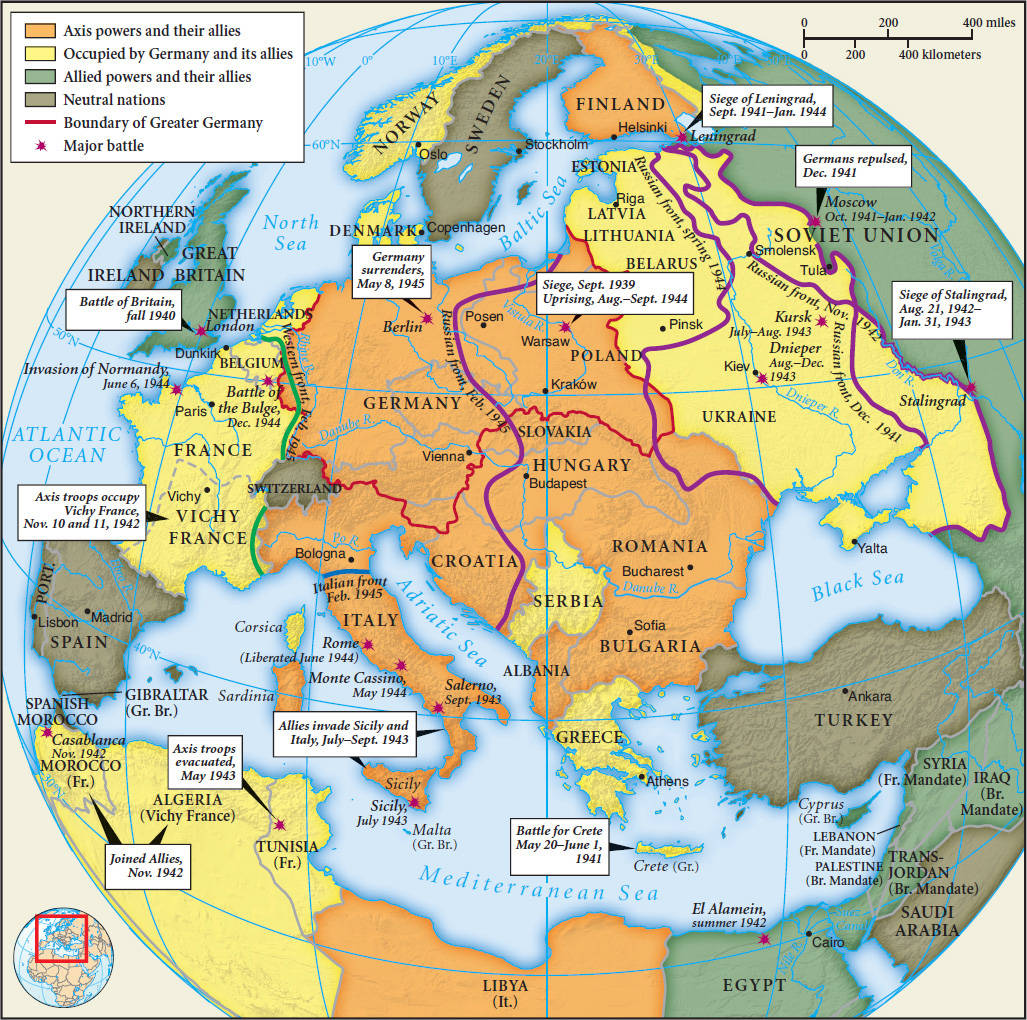The Road to War in Europe
If Japan was the dissatisfied power in Asia, Nazi Germany clearly occupied that role in Europe. As a consequence of their defeat in World War I and the harsh terms of the Treaty of Versailles, many Germans harbored deep resentments about their country’s position in the international arena. Taking advantage of those resentments, the Nazis pledged to rectify the treaty’s perceived injustices. Thus, to most historians, the origins of World War II in Europe lie squarely in German aggression, although with many twists and turns and encouraged by the initial unwillingness of Britain, France, or the Soviet Union to confront that aggression forcefully. If World War I was accidental and unintended, World War II was deliberate and planned—perhaps even desired—by the German leadership and by Hitler in particular.
War was central to the Nazi agenda in several ways. Nazism was born out of World War I, the hated treaty that ended it, and the disillusioned ex-soldiers who emerged from it. Furthermore, the celebration of war as a means of ennobling humanity and enabling the rise of superior peoples was at the core of Nazi ideology. “Whoever would live must fight,” Hitler declared. “Only in force lies the right of possession.” He consistently stressed the importance for Germany of gaining lebensraum (living space) in the east, in the lands of Slavic Poland and Russia. Inevitably, this required war (see Document 20.1).
Slowly at first and then more aggressively, Hitler prepared the country for war as he also pursued territorial expansion. A major rearmament program began in 1935. The next year, German forces entered the Rhineland, which the Treaty of Versailles had ordered demilitarized. In 1938, Germany annexed Austria and the German-speaking parts of Czechoslovakia. At a famous conference in Munich in that year, the British and the French gave these actions their reluctant blessing, hoping that this “appeasement” of Hitler could satisfy his demands and avoid all-out war. But it did not. On September 1, 1939, Germany unleashed a devastating attack on Poland, triggering the Second World War in Europe, as Britain and France declared war on Germany. Quickly defeating France, the Germans launched a destructive air war against Britain and in 1941 turned their war machine loose on the Soviet Union. By then, most of Europe was under Nazi control (see Map 20.5).

Although Germany was central to both world wars, the second one was quite different from the first. It was not welcomed with the kind of mass enthusiasm across Europe that had accompanied the opening of World War I in 1914. The bitter experience of the Great War suggested to most people that only suffering lay ahead. The conduct of the two wars likewise differed. The first war had quickly bogged down in trench warfare that emphasized defense, whereas in the second war the German tactic of blitzkrieg (lightning war) coordinated the rapid movement of infantry, tanks, and airpower over very large areas.
Such military tactics were initially successful and allowed German forces, aided by their Italian allies, to sweep over Europe, the western Soviet Union, and North Africa. The tide began to turn in 1942 when the Soviet Union absorbed the German onslaught and then began to counterattack, slowly and painfully moving westward toward the German heartland. The United States, with its enormous material and human resources, fully joined the struggle against Germany in 1942. Three more years of bitter fighting ensued before the German defeat in May 1945.